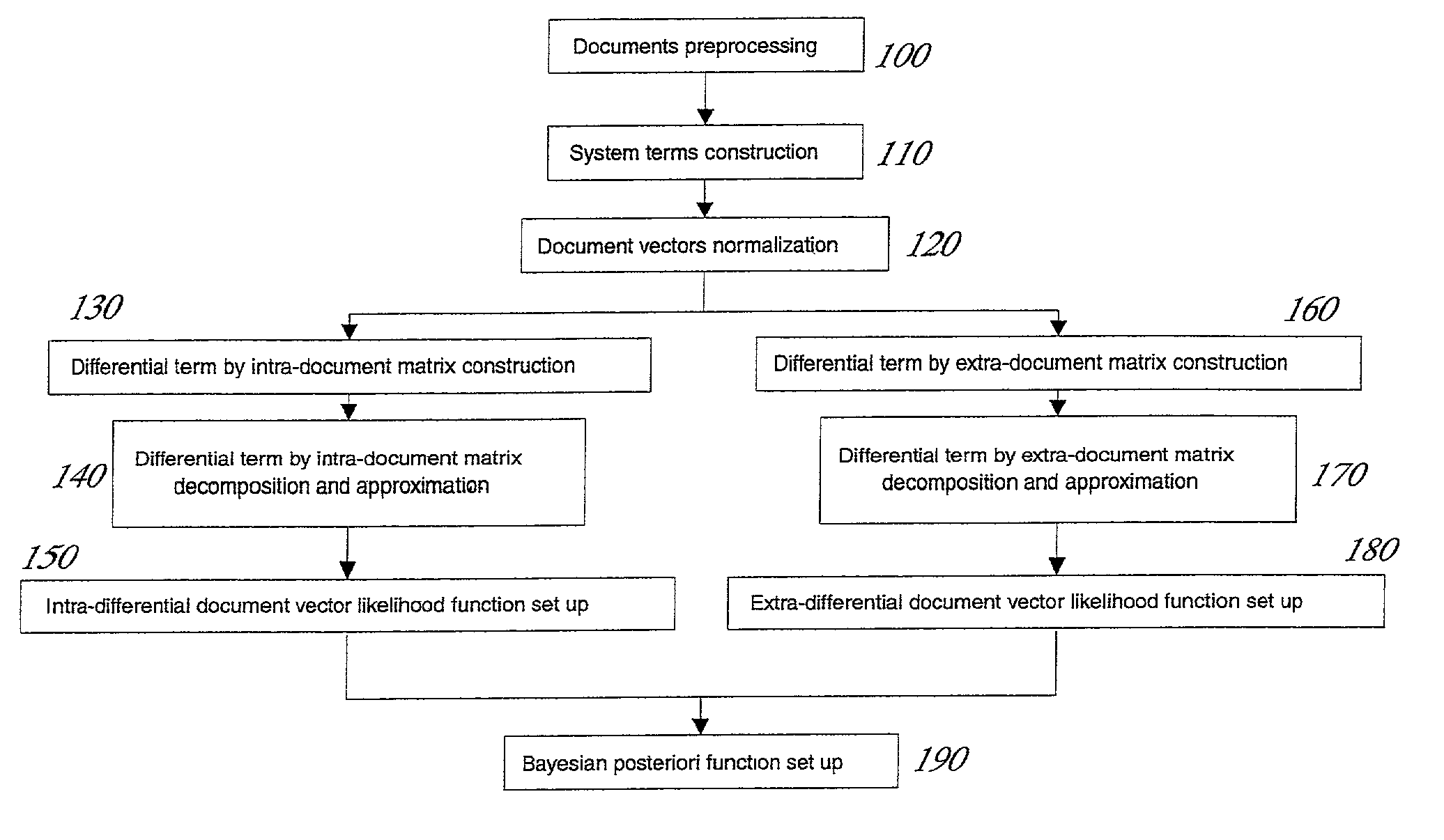Differential LSI space-based probabilistic document classifier
a probabilistic document and differential space technology, applied in the field of document classification, can solve the problem that the context sensitive semantic grammar of natural language related to synonymy and polysemy can be dampened
- Summary
- Abstract
- Description
- Claims
- Application Information
AI Technical Summary
Benefits of technology
Problems solved by technology
Method used
Image
Examples
Embodiment Construction
[0021]In describing a preferred embodiment of the invention, specific terminology will be resorted to for the sake of clarity. However, the invention is not intended to be limited to the specific terms so selected, and it is to be understood that each specific term includes all technical equivalents which operate in a similar manner to accomplish a similar purpose.
[0022]To begin with a few basic concepts, a term is defined as a word or a phrase that appears in at least two documents. So-called stop words such as “a”, “the”, “of” and so forth are excluded. The terms that appear in the documents may representatively be selected and listed as t1,t2, . . . , tm.
[0023]For each document j in the collection, each of the terms with a real vector (a1j,a2j, . . . ,amj), is assigned with ay=fy·g1, where fy is the local weighting of the term t1 in the document indicating the significance of the term in the document, while g1, is a global weight of all the documents, which is a parameter indicat...
PUM
 Login to View More
Login to View More Abstract
Description
Claims
Application Information
 Login to View More
Login to View More - R&D
- Intellectual Property
- Life Sciences
- Materials
- Tech Scout
- Unparalleled Data Quality
- Higher Quality Content
- 60% Fewer Hallucinations
Browse by: Latest US Patents, China's latest patents, Technical Efficacy Thesaurus, Application Domain, Technology Topic, Popular Technical Reports.
© 2025 PatSnap. All rights reserved.Legal|Privacy policy|Modern Slavery Act Transparency Statement|Sitemap|About US| Contact US: help@patsnap.com



